|
|
The Spencer Family Web |
|||||||||||||||||||||||||||||||||||||||||||||||
|
When I was 14 I joined the ATC (Air Training Corp) and our instructor for Communications was a radio amateur Maurice Edwards with the call-sign G3MV. He helped me get my first job training with Overseas Telegraphs and helped me get my first short wave receiver kit working. This all lead to my taking the RAE (Radio Amateurs Examination) run by City and Guilds and then passing my morse test at 12Words/Minute to get my own Amateur Radio Licence in 1965. |
|||||||||||||||||||||||||||||||||||||||||||||||
|
G3ULO |
|||||||||||||||||||||||||||||||||||||||||||||||
|
1965 |
|||||||||||||||||||||||||||||||||||||||||||||||
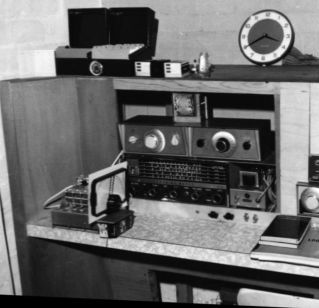 |
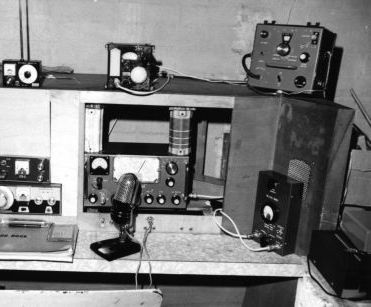 |
||||||||||||||||||||||||||||||||||||||||||||||
|
Here my first 'shack' (what Radio Amateurs call their radio rooms, yes shack is about right!) in the family coal shed and it replaced my 'Shortwave listening shack' up in the loft where I got roasted in summer and deep frozen in winter. For those who know about thse things on the left is a Geloso Shortwave converter feeding a Japanese receiver as an IF at 1.6Mhz or Megacycles as we called them in those days. Above which are a Codar Preselector and 'Q' Multiplier. In the middle a Codar AT5 10Watt AM/CW transmitter for top band and above that a CTX2 crystal controlled AM transmitter for 2 Metres. On the right hand side is the KW Valiant CW (Morse) only transmitter with 50 Watts on all bands 160 to 10 Metres. Quite a rare beast as KW only made a very limited number of CW only models, I later sold it to 'Woody' G3TGC. On the desktop you can see the 'log book' the microphone and on the right a KW SWR Meter.. On top of the console is a rollercoaster antenna tuner and on the right a Wavemeter Class 'D' for frequency checking. The antenna was in a very small garden and was a 66 foot horizonal vee at about 15 feet loaded against a tuned counterpoise. With this set-up I worked around the world, mostly on CW. With AM on topband reaching as far as GM3SVK in theShetland isles and stations in Czechoslovakia. I worked over 1000 stations in the first year of operation from this shack. |
|||||||||||||||||||||||||||||||||||||||||||||||
|
1968 |
|||||||||||||||||||||||||||||||||||||||||||||||
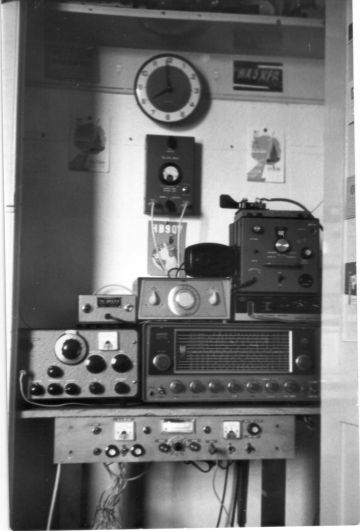 |
|||||||||||||||||||||||||||||||||||||||||||||||
|
Getting married to Julie in 1968 meant a little less time spent in the shack (after all Amateur Radio was well known as a divorce maker in those days!) and our first home together where I fitted the 'shack' into a cupboard in the back room. By this time you can see on the left my first SSB (Single Side Band) transmitter, the Sphinx with 80Watts working on 160, 80 and 20 metres and on the right a Japanese receiver modified to work transceive with the Sphinx, above you can still see the same Codar preselector, Class 'D' Wavementer and the KW SWR meter. The positive thing about our new home in Westbury Avenue in Brentwood was the 130 Foot garden which allowed a very effective quarterwave antenna for top-band, so at last I had quite a big signal. |
|||||||||||||||||||||||||||||||||||||||||||||||
|
After buying our first home in Colchester and operating with a a very small garden which meant a very small antenna we moved to Germany in 1974 and I obtained a German call-sign and continued to enjoy my amateur radio as : |
|||||||||||||||||||||||||||||||||||||||||||||||
|
DJ0HF |
|||||||||||||||||||||||||||||||||||||||||||||||
|
1978 |
|||||||||||||||||||||||||||||||||||||||||||||||
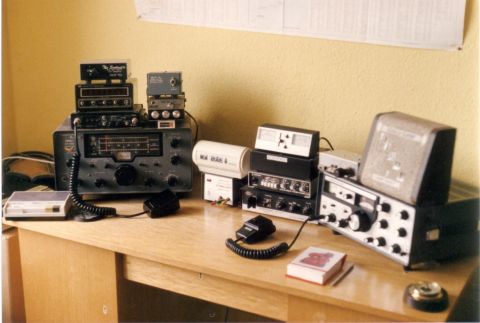 |
|||||||||||||||||||||||||||||||||||||||||||||||
|
Here the shack was a complete room and on the right you can see the Yaesu FT-250 SSB transceiver running 100Watts on all bands 80 to 10 Metres in the middle the electronic keyer for CW and above that an FL2 filter used in conjunction with the SR-550 Receiver on the left. Above this is the 2M FM 10 Watt transceiver for VHF and the antenna was an FD4 Windom in inverted Vee configuration above the house providing world-wide contacts and a 5 element 2 metre beam up in the loft for 2Metre working. |
|||||||||||||||||||||||||||||||||||||||||||||||
|
1990 |
|||||||||||||||||||||||||||||||||||||||||||||||
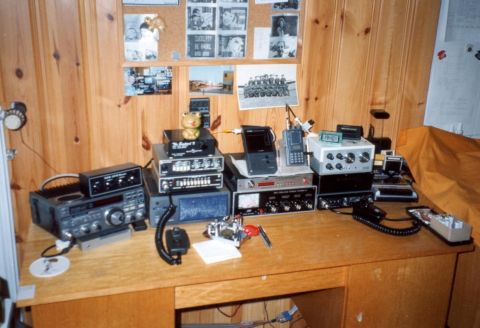 |
|||||||||||||||||||||||||||||||||||||||||||||||
|
Buying our current home in 1984 I eventually set up the shack in a large cellar room. In 1985 it looked something like this with the Yaesu FT-757GXII 100 Watt transceiver for all bands 160 to 10 and next to that the Powersupply, MFJ antenna tuner and then the 2M FM Transceiver above withich is a DX100 converter for long distance TV reception. Above the antenna tuner is an MFJ-1278 data terminal for radio teletype, fax and slow scan television. The antenna was still the FD4 running from the house down to a tree at the bottom of the garden. |
|||||||||||||||||||||||||||||||||||||||||||||||
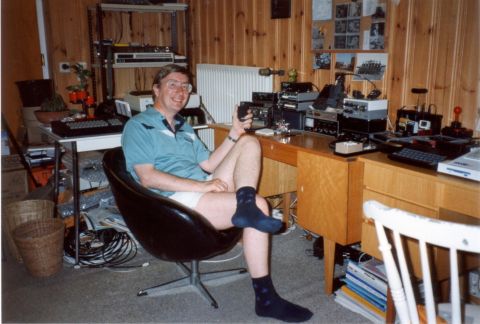 |
|||||||||||||||||||||||||||||||||||||||||||||||
|
2006 |
|||||||||||||||||||||||||||||||||||||||||||||||
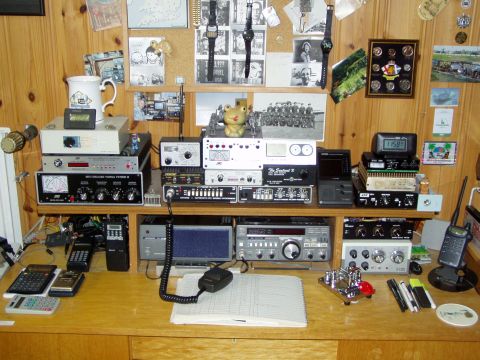 |
|||||||||||||||||||||||||||||||||||||||||||||||
|
2007 |
|||||||||||||||||||||||||||||||||||||||||||||||
|
The shack is still in the same cellar room but the FT-757GX2 has been replaced by an FT-847 providing all bands from 160M to 70cm and an AOR 8600MK2 for general VHF/UHF listening. There is an FD4 Windom antenna for the lower frequency bands running down the garden and an MFJ loop for 30 to 10Metres and although I don't work 1000 stations a year any more I do still enjoy Amateur Radio, it's a great hobby. |
|||||||||||||||||||||||||||||||||||||||||||||||
|
2024 |
|||||||||||||||||||||||||||||||||||||||||||||||
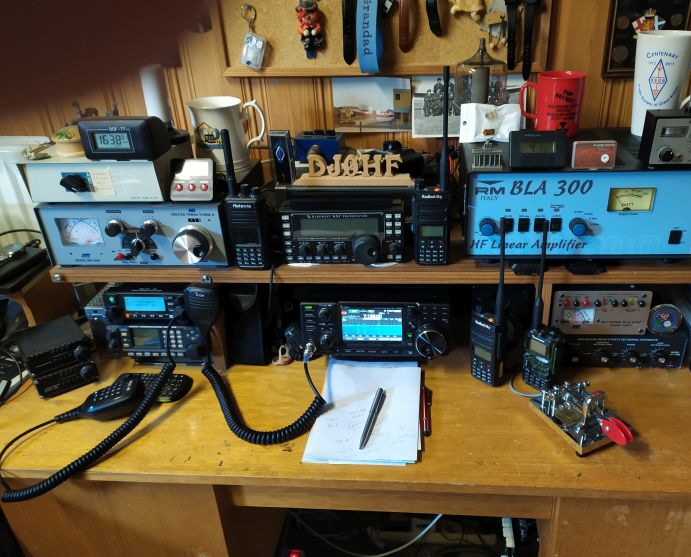 |
|||||||||||||||||||||||||||||||||||||||||||||||
|
It's 2024 and Amateur Radio is still a great hobby, Here in the shack you can see the main HF transceiver in the middle of picture on the desk which is an IC-7300 as well as on the shelf above an Elecraft KX3. Plus a BLA300 Power amplifier.Below the BLA300 power amplifier to the right is the MFJ Magnetic loop antenna tuner and an MFJ Noise canceller. On the desk at the left is an AOR AR8600 scanner obove which is a Retevis RT90 for DMR and FM on 2 metres and 70cm. On the shelf above that is the MFJ antenna tuner. Also to the very left a couple of tiny ATS20 receivers and several VHF/UHF handies for both DMR and FM distributed around the desk. Not to forget of course the all important vibroplex electronic bug key at the front right. My antennas today are an FD4 OCFD running down the garden, An MFJ cobweb antenna obove the garage roof for 20 to 10 metes and an MFJ magnetic loop antenna in the loft. I monitor the Active elements bridge on DMR most of the time that is Talk Group 53085 on the Brandmeister network, and on HF I am mostly active on 40 metres. |
|||||||||||||||||||||||||||||||||||||||||||||||
|
[Home] [Ian and Julie] [Family News] [Hobbies] [Ham Bands] [Colin's Gallery] [Family Funnies] [Bits'n Pieces] [RAIBC] [Downloads] [Impressum] |














